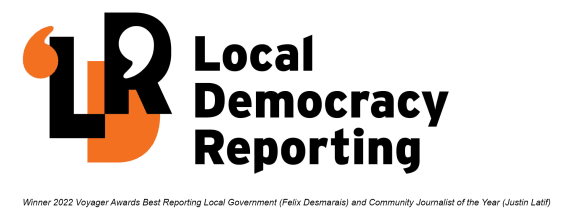
Lagarosiphon in Lake Paringa. Photo: Supplied / West Coast Regional Council
The invasive aquatic weed lagarosiphon first detected in the Kapitia Reservoir near Kumara (Kohimara) in 2019 has spread.
A recent drop in the water level by hydro operator Manawa Energy showed graphically the extent and spread of the green carpet of lagarosiphon weed across the bed of the reservoir.
Lagarosiphon is also known in the South Westland lakes Ianthe and Paringa, and has spread rapidly since being detected in the early 2000s in the South Island, mainly through recreation craft use and transfer.
Twenty-eight sites at nine West Coast lakes between Haast and Greymouth were surveyed between January and March by the West Coast Regional Council and Department of Conservation, looking for introduced aquatic weeds.

Divers undertaking the aquatic weed survey, in Lake Māhinapua. Photo: Supplied / West Coast Regional Council
As well as Kapitia Reservoir, the others were Lakes Moeraki, Paringa, Mapourika, Ianthe, Māhinapua, Kaniere, Brunner and Hochstetter.

The results of the annual survey showed "no new incursions" of lagarosihpon or two other common introduced aquatic weeds, egeria densa or ceratophyllum demersum (coontail).
"Lagarosiphon major remains a dominant species at surveillance sites in Lake Paringa, Inathe and the Kapitia Reservoir, and egeria densa was present in all lakes apart from Lake Hochstetter," a council staff report to the June meeting said.
One marginal wetland grass, phragmites australis was detected in a single eDNA sample taken at the outlet of Lake Mapourika, near Franz Josef.
As a result, staff recommended further surveillance along the lake margins and any eradication as soon as possible.

A depleted Kapitia Reservoir on 27 June, revealing its weed-covered bed. Photo: LDR / Greymouth Star/ Brendon McMahon
Several other introduced aquatic weeds "of less concern" were detected in the survey, including Cape pondweed and common water lily at Lake Mahinapua.
At the Kapitia Reservoir, surveillance at three sites had been undertaken when the water level was very low, exposing large areas of weeds.
In Ianthe, at the main boat ramp and landing, the ratio of indigenous water weeds was 76 to 95 percent compared to 6 to 25 percent invasive; at the Ianthe Creek outlet it had a ratio of 25 to 50 percent native water plants to 51 to 75 percent invasives.
The survey was co-funded by DOC and Manawa Energy and involved both diving and shoreline assessment.

Kapitia Reservoir on June 8 before it was lowered for power generation management by Manawa Energy. Photo: LDR / Greymouth Star/ Brendon McMahon
Environmental DNA samples were also taken as an early detection tool to identify aquatic weeds.
No new incursions of three species of particular concern including lagarosiphon major were detected in the lakes surveyed or through eDNA in 2023.
"However, the lagarosiphon major within the Kapitia Reservoir, identified in 2019, was found to have spread throughout the reservoir," council biosecurity co-ordinator Taylor Blyth said.
"West Coast lakes continue to present moderate to high value ecosystems in regard to native submerged vegetation and a lack of major invasive macrophytes. Therefore, early detection of invasive weed species remains an important component to lake preservation."
It was recommended council continued to endorse the annual aquatic week surveillance programme.
The 2023 survey was undertaken by TC Environmental for council and DoC. Surveillance for weeds was performed using a systematic grid search with divers entering from the shore and swimming to the deepest extent of the weed.
GPS was also used to get representative evidence in addition to visual surveillance from the shores.
Local Democracy Reporting is Public Interest Journalism funded through NZ On Air




